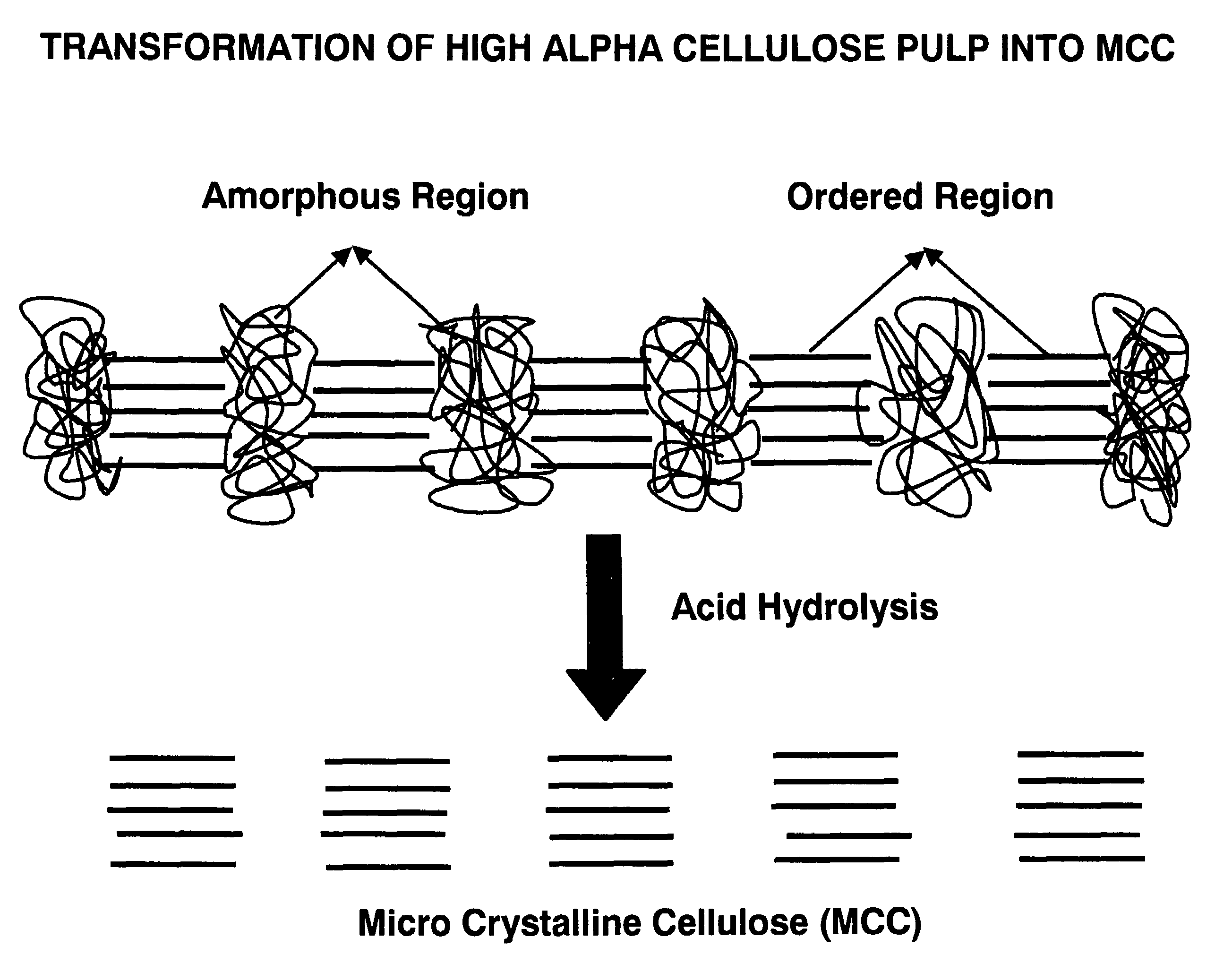Surface treatment with texturized microcrystalline cellulose microfibrils for improved paper and paper board
a technology of microfibrils and microfibrils, which is applied in the field of surface treatment with texturized microfibrils for improving paper and paper board, and production of texturized microfibrils, can solve the problems of high price of these woods as raw materials, low quality surface features, and large quantity of available hardwoods, so as to improve the binding capacity of texturized mcc, improve the effect of mcc and low viscosity
- Summary
- Abstract
- Description
- Claims
- Application Information
AI Technical Summary
Benefits of technology
Problems solved by technology
Method used
Image
Examples
example i
[0039]In a one embodiment of the present invention, surface treatments were applied using a “shower” technique. In this process 2-layer hand sheets are made on a standard TAPPI sheet mold, by first draining the bottom layer furnish to a thin water column level, and then applying a top layer of texturized MCC processed from bleached southern pine kraft pulp, prepared in accordance with the present invention. This is accomplished using a perforated plastic cup to disperse the texturized MCC in a shower method. The combined furnish is then drained completely on the sheet mold. Control sheets were made as single layer hand sheets. The pine furnish was refined to 540 csf (Canadian Standard Freeness) on a PFI mill. The hardwood furnish was refined to 450 csf. To avoid the bias caused by TAPPI hand sheet wet pressing, where the sheet side facing the metal plate usually gets more smoothing than the opposite side, the 2-stage TAPPI wet pressing procedure was modified slightly. The modificati...
example 2
[0042]A laboratory paper making machine called Dynamic Sheet Former (DSF) was used to simulate the commercial production of paperboard samples. Corresponding DSF sheets are surface treated with texturized MCC of the present invention on the top surface using a jet during DSF formation. Single layer pine sheets and hardwood sheets were also made as controls. The targeted OD basis weight was 200# / 3000 sq ft. The fiber furnishes used were southern pine (Valley refined to 500 csf), mill-refined Hardwood (589 csf), and texturized MCC (made from southern pine) added to the DSF sheets.
[0043]The DSF sheets were prepared to contain 5% and 10% texturized MCC, with all the MCC applied as the top layer, together with the control pine and hardwood DSF sheets. All DSF were then calendered at identical conditions (i.e., 50 psi for DSF paper size). The Sheffield smoothness (a measure of the roughness of the paper board top sheet) for these papers were: 166.5 for hardwood control; 287 for 5% texturi...
example 3
[0045]A lab scale puddle size-press was used to apply texturized MCC on the surface of a Springhill uncoated free sheet (UFS envelope grade). The texturized MCC was applied at a solids content of 5%, and a starch control was made at 6% solids. After very light calendering at identical conditions, the sheets (8″ by 11″) were printed at a flexo proofer to determine the flexo printability. The results indicate that the ink coverage or print uniformity of the MCC sized sample was better than the starch control.
PUM
| Property | Measurement | Unit |
|---|---|---|
| temperature | aaaaa | aaaaa |
| residence time | aaaaa | aaaaa |
| length | aaaaa | aaaaa |
Abstract
Description
Claims
Application Information
 Login to View More
Login to View More - R&D
- Intellectual Property
- Life Sciences
- Materials
- Tech Scout
- Unparalleled Data Quality
- Higher Quality Content
- 60% Fewer Hallucinations
Browse by: Latest US Patents, China's latest patents, Technical Efficacy Thesaurus, Application Domain, Technology Topic, Popular Technical Reports.
© 2025 PatSnap. All rights reserved.Legal|Privacy policy|Modern Slavery Act Transparency Statement|Sitemap|About US| Contact US: help@patsnap.com



